Chinese vs Japanese - How Different Are They? Prepare Your Travel to Asia

Ah, that common query - Chinese vs Japanese. Many know what they are and where they are spoken. However, not many of us are familiar with the key differences between these languages.
Chinese and Japanese are two of the most spoken languages in the world. However, they are often confused by a lot of non-native speakers. Chinese is spoken in a number of different countries as the main language, while Japan is the only country that uses Japanese as its first language.
Today we will be looking at the differences between these two languages in regard to their characters, spoken language, and tones. We’ll also take you through the best course to learn each language so that you can begin to understand ⅙ the world’s population.
Where They’re Spoken: Japanese and the Chinese Languages
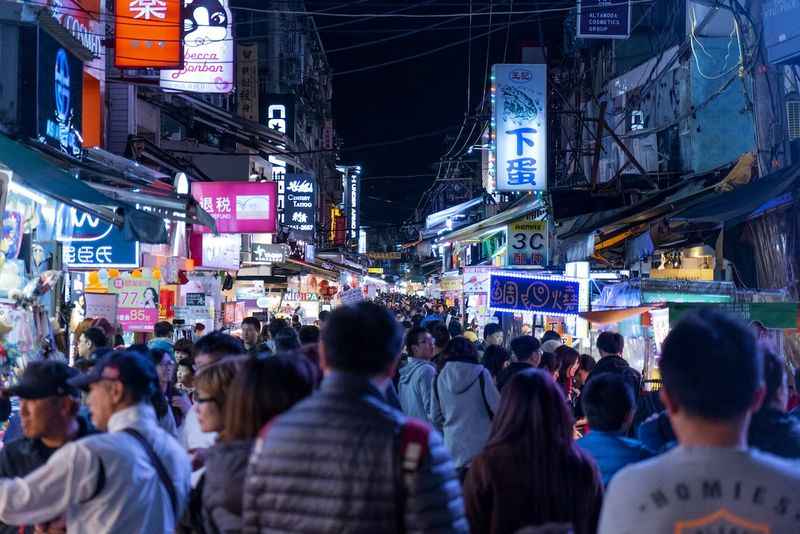
This might seem like stating the obvious, but Chinese is spoken predominantly in China while Japanese is spoken in Japan. However, both of these languages have spread from their original countries into many more across the world.
China has the largest population in the world with an astonishing 1.4 billion people. With their native language being Chinese, learning this language will make you able to communicate with around one-sixth of the world’s population!
Mandarin is the main language spoken in Mainland China, with over 955 million (67%) of the population speaking Mandarin. Standard Chinese is the official language of China and is otherwise known as standard Mandarin.
Cantonese is another popular Chinese language mainly spoken in Southern China. In comparison to Standard Chinese, only 5% of the population speaks Cantonese.
Chinese is not only spoken in China, as more Chinese speakers are moving abroad and creating Chinese communities in over areas of the world. Chinese is considered the official language of Taiwan and is commonly spoken in Singapore.
One of Macau’s official languages is Cantonese, and Hong Kong is known for mostly speaking Mandarin. As you can see, Chinese is the official language of many different countries. However, it is also one of the most commonly spoken languages in the world, with Chinese-speaking communities thriving in a great number of countries around the world.
On the other hand, Japanese is the official language of Japan and no other country since the mid-20th century. That being said, there are still more than 127 million Japanese speakers around the world and it is considered one of the world's major languages.
An estimated 1.5 million Japanese speakers are living abroad, mainly in North and South American countries. So, the language has been spread out across the world and is commonly heard among different communities.
Chinese Characters and Japanese Scripts
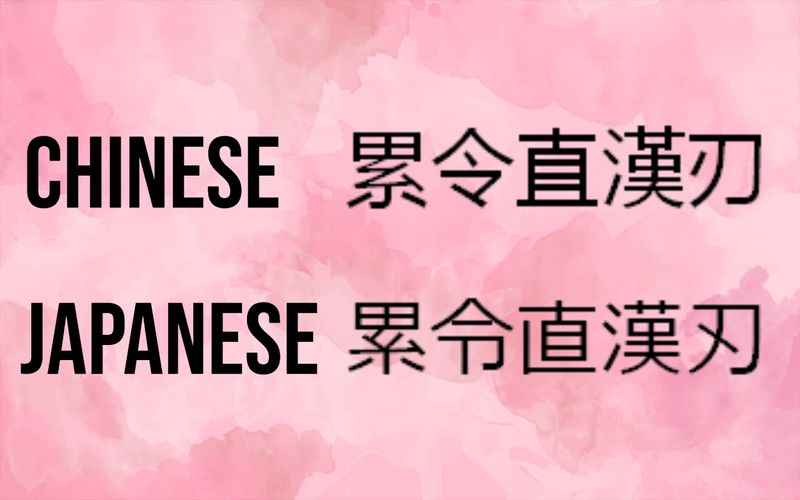
Both the Chinese language and the Japanese language use characters in their written form. These characters, known as Kanji, are used to signify whole words or concepts.
Japanese also uses two other scripts, which were formed in the IV century to allow the Japanese people to express their own language on paper more clearly. These scripts, Hiragana and Katakana, are more like alphabets in which each symbol expresses a single sound, rather than a whole concept.
Before they created their own characters, Chinese characters were used in Japan for Buddhism and philosophical purposes. However, as Kanji was not created for the Japanese language, they could not always express everything clearly in Japanese.
In the beginning, only a few educated Japanese people were able to read Chinese symbols. However, over the years, Chinese characters and the two other Japanese scripts came together to form the complex Japanese writing system.
All of this means that there are two main ways of pronouncing different characters. So, each Kanji has one on'yomi (a Chinese origin) and one kun'yomi (a Japanese origin).
An example of these scripts is as follows:
The Chinese character 山 translates to the mountain.
In Chinese, it is pronounced "san", while in Japanese, you say "yama".
You would use the on'yomi pronunciation if the character is accompanied by other characters to form a composite word, while you’d use the kun'yomi pronunciation if the character is alone.
For example, if the character 山 contained the name Mount Fuji, you would use on'yomi and pronounce it "Fuji San" as the name is created from three characters: 富士山.
Chinese vs Japanese: The Spoken Languages
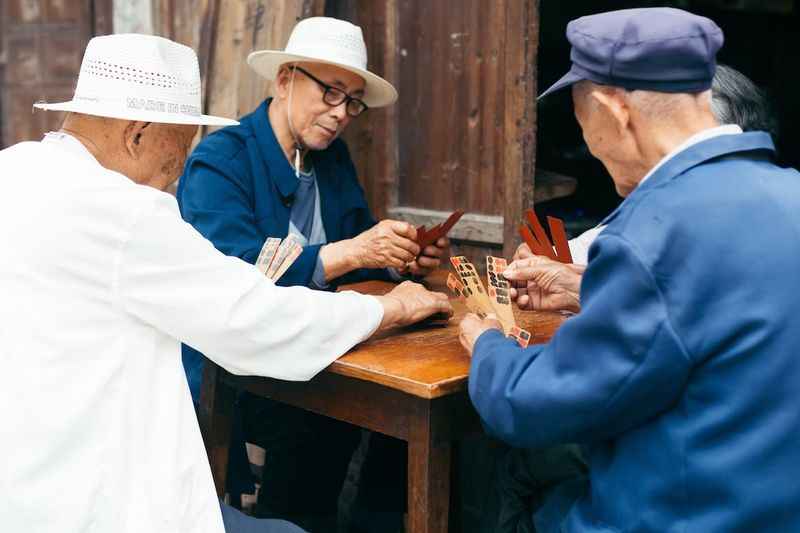
Speaking Chinese involves intonations which can be much more difficult to learn than Japanese, as there are no tones to learn when it comes to this language. Speaking Chinese without different tones would make it very difficult to understand as Chinese speakers depend heavily on tones to convey what they are saying.
On the other hand, Japanese speakers need to learn how to change their pitch between words. This is still not an easy job, but it can be considered easier than Chinese tones. For example, the word hashi can either mean "chopsticks" or "bridge" depending on the pitch you use.
There are five vowels in Japanese that have sounds that all feature in English. This is one of the reasons why Japanese is considered the most natural Asian language to learn for an English speaker.
Chinese and Japanese are both prominent East Asian languages, but they differ significantly in terms of spoken language characteristics.
Learning Japanese allows for a deeper immersion into Japanese pop culture, which has captivated people worldwide. Exploring unique Japanese food, such as sushi and rice dishes, and understanding the nuances of Japanese society become more accessible with a grasp of the language.
Meanwhile, learning Chinese opens doors to talking to over a billion people worldwide and exploring the intricacies of Chinese literature and art. The Chinese writing system, with its traditional characters and intricate grammar, poses its own challenges. There are more characters in the Chinese script than most people will ever learn.
Nevertheless, both languages offer enriching experiences for language learners and provide gateways to appreciate the diverse cultures of East Asia.
The Chinese Language: Tones
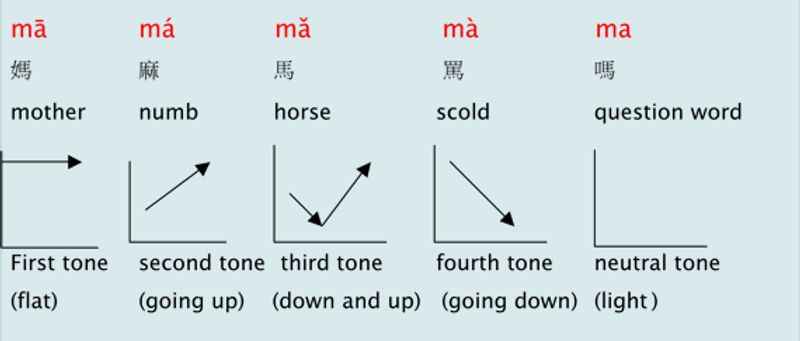
It would not be possible to provide a concise overview of Chinese vs Japanese without discussing tones. The tones of a language change the meaning of what you are saying depending on the pitch of your accent.
Chinese is a tonal language, which can pose challenges for learners. Mastering the intonations is crucial, as Chinese speakers heavily rely on tones to convey meaning.
Many people consider the tones to be the most difficult aspect of Chinese learning. While Mandarin only has five tones to learn, Lukang Township Taiwanese has eight tones. Standard Chinese has four tones to learn.
The Japanese Language: Pitches

On the other hand, Japanese speakers focus on pitch changes between words. While still challenging, this aspect is considered relatively easier than Chinese tones.
Unlike Chinese, Japanese is not a tonal language and therefore you do not need to learn different tones for each syllable of a word. While pitch will alter some pronunciations of the words, the general context of what you are saying will allow someone to understand what you’re saying.
There are 45 syllables in the Japanese language, each of which is pronounced the same way no matter where they appear in a word. Many people believe that Japanese is easier to learn than Chinese as you do not have to worry about the different tones in your dialect.
Expressions and Idioms
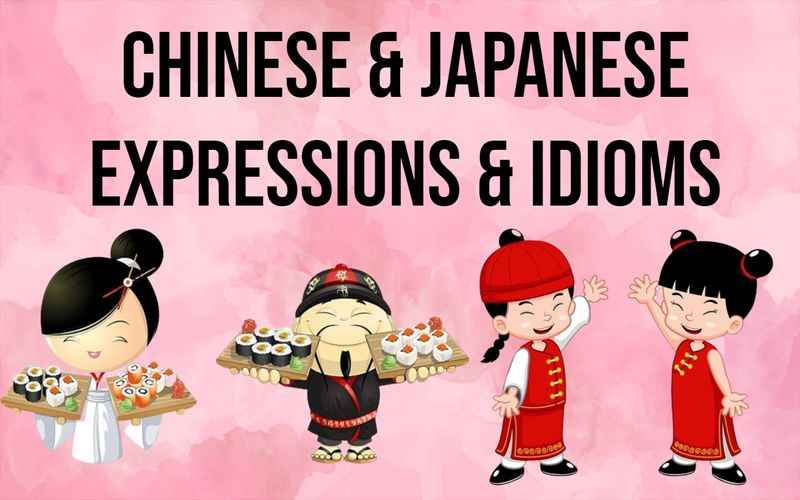
Both Chinese and Japanese speakers use their own expressions and idioms to convey meaning. Below we have compiled a list of Chinese and Japanese expressions that you can learn to use in your everyday life.
Chinese
- 脚踏实地 (jiǎo tà shí dì) - To step on solid ground. The meaning of this expression is to work hard and focus to proceed in a steady fashion.
- 九牛一毛 (jiǔ niú yì máo) - Nine cows and one strand of cow hair. This idiom is similar to the English "needle in a haystack", meaning that it is difficult to find something.
- 一见钟情(yí jiàn zhōng qíng) - Love at first sight. Generally used for people, but can also be used to describe inanimate objects.
Japanese
- 砂を噛むよう (すなをかむよう) - Like chewing on sand. This idiom indicates that something is boring and tedious.
- 猫も杓子も (ねこもしゃくしも) - Even cats and rice ladles. This expression is similar to the English "everyone and their mother" and refers to everyone that you can think of.
- 月とすっぽん (つきとすっぽん) - the moon and a soft-shell turtle. The expression means that two things are as different as the moon and a turtle, that they couldn’t be more alike.
Traveling to Japan or to China

Traveling to Japan or China offers an extraordinary experience that has the power to transform lives and immerse visitors in the rich tapestry of East Asian culture. Both countries boast captivating histories, vibrant traditions, and a myriad of attractions that make them must-visit destinations for tourists.
China, with its ancient civilization and diverse landscapes, beckons travelers to explore its wonders. From the magnificent Great Wall to the breathtaking landscapes of Zhangjiajie National Forest Park, China offers awe-inspiring sights that leave a lasting impression.
The country's rich cultural heritage is evident in its renowned landmarks like the Forbidden City and the Terracotta Army. Moreover, engaging with the locals and learning a few phrases in the widely spoken Chinese language can greatly enhance the travel experience, fostering connections and deeper cultural understanding.
Similarly, Japan entices travelers with its unique blend of tradition and modernity. From the bustling streets of Tokyo to the serene temples of Kyoto, Japan showcases a harmonious coexistence of ancient customs and cutting-edge technology.
You can witness captivating cultural practices like tea ceremonies, explore historic sites such as the majestic Himeji Castle, or indulge in the vibrant pop culture that permeates every aspect of Japanese society.
Immersing yourself in the Japanese way of life, whether through staying at a traditional ryokan or experiencing the intricacies of sushi-making, can leave an indelible mark on travelers' hearts and minds.
Traveling to Japan or China opens doors to incredible encounters, allowing tourists to broaden their horizons and gain a deeper appreciation for the rich tapestry of East Asian countries.
The unique cultural experiences, combined with the opportunity to learn about the traditions, history, and language of these fascinating destinations, make a journey to Japan or China truly life-changing.
Best Courses to Learn Chinese Before Traveling to China
If you intend to visit China or Japan, it helps to study the Chinese and Japanese languages and explore the Japanese and Chinese cultures.
Learning either of these languages is a big task, but there are apps to help.
Rocket Chinese

Rocket Chinese part of Rocket Languages, is a language-learning app that uses audio lessons, interactive exercises, and readings to get you to a conversational level in a foreign language.
Through its structured and proven successful process, you will begin to understand more about the language you are learning.
In our opinion, Rocket Chinese offers one of the most comprehensive information for beginners learning the language. They teach Mandarin, which is the most commonly spoken language in China, and is often referred to as Standard Chinese.
Chinese Zero to Hero!

Chinese Zero to Hero! follows the HSK Standard Course, taking you from HSK 1 to HSK 6. It includes more than 270 hours of learning material, bringing you from complete beginner to advanced level.
There are a number of courses that can be purchased individually, which is ideal for learners not wanting to start from scratch or purchase the courses all at once. Enter the Promo Code “TL10” to receive 10% off any course or purchase.
If you are looking to learn modern Chinese and Mandarin Chinese you can also try out GoEast Mandarin and YoYoChineese. There are similar courses for the Korean language on the same platform as well.
Private Tutors

Another good option for tonal languages is finding a tutor to help you out. Learning foreign words and grammar is easiest when you are learning from local Japanese and Chinese speakers.
So, if you want to speak Chinese, a native-speaking tutor is a great starting point. They will also teach you a bit about Chinese culture and can even give you exercises to master the Chinese writing system.
The language courses and apps can supplement your learning with your private tutor. This multi-faceted approach to Chinese language learning is a great way to advance quickly.
PS. Good luck with Chinese grammar.
Best Courses to Learn Japanese Before Travel to Japan
When preparing to travel to Japan, it's advisable to learn the Japanese language (and a bit about Japanese culture) and understand the cultural nuances.
Japanese people tend to be more welcoming towards tourists who make an effort and show some respect for the language and culture of Japan. Here are three highly recommended courses that encompass various aspects of language learning and cultural understanding:
Rocket Japanese

Rocket Japanese is a comprehensive online course designed to teach Japanese to learners of all levels. It covers essential language skills such as grammar, vocabulary, and pronunciation.
The course also emphasizes the importance of understanding Japanese culture, including its connections to Chinese culture. With interactive audio lessons and practical exercises, Rocket Japanese helps learners build conversational skills and gain confidence in using the language effectively.
Japanese Uncovered

Japanese Uncovered takes a unique storytelling approach to language learning. Through captivating stories, this course introduces learners to Japanese grammar, vocabulary, and writing systems.
By immersing yourself in Japanese narratives, you'll develop a deep understanding of the language's tonal nature and the similarities and differences between Japanese and Korean characters. Additionally, cultural insights are woven into the course, providing a broader context for language use.
Private Tutors
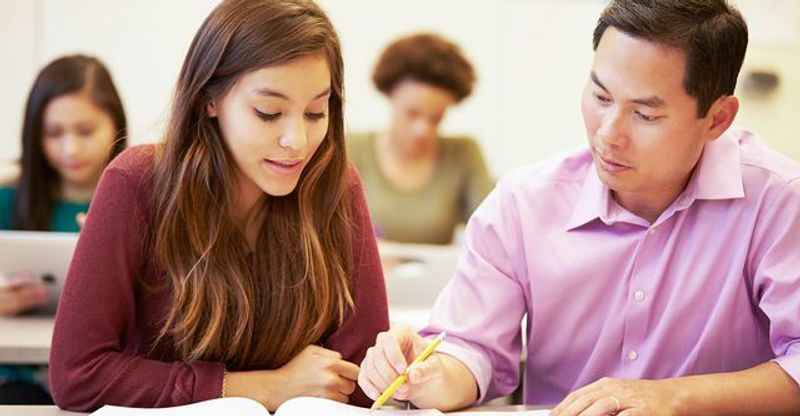
You can also sign up for online lessons with a native Japanese person to help you progress more quickly. Local tutors can expose you to more useful native Japanese words, idiomatic language, slang, and Japanese scripts.
Remember, the Japanese writing system consists of three scripts, so it is worth getting some professional help in learning them.
Attain Online Japanese Language School
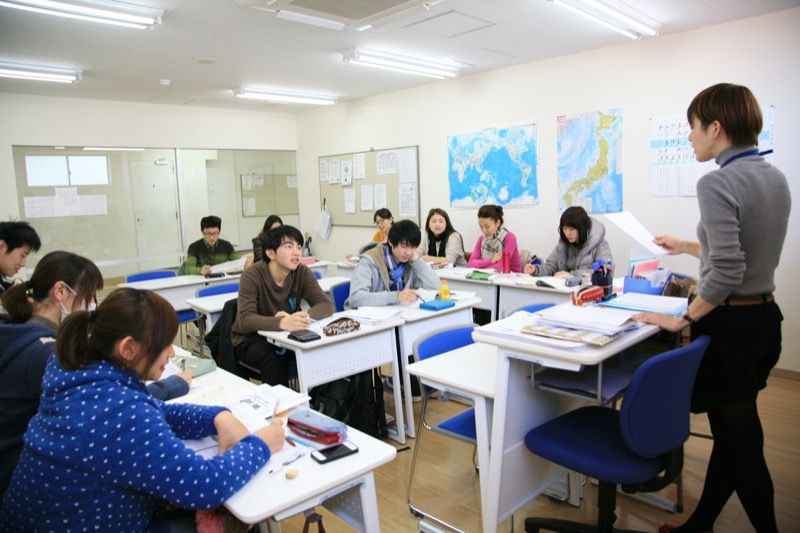
Attain Online offers a range of comprehensive Japanese language courses suitable for beginners and intermediate learners.
These courses cover a wide range of topics, including the Japanese writing system, Chinese characters used in Japanese (kanji), and the Sino-Tibetan language family, which includes Japanese and Chinese.
The curriculum focuses on spoken language skills, grammar, and cultural understanding, equipping learners with practical communication skills for their journey to Japan.
Pimsleur

Pimsleur is an audio-based course that focuses on oral language, and they offer plenty of different language courses to learn. The lessons are offered in both women's and men's voices so that you can learn how different genders pronounce the words differently.
Pimsleur offers 150 30-minute lessons in Japanese, and you can even use the driving mode to learn in the car. There are different levels of subscriptions to choose from according to your expertise level.
Preparing Your Travel to Asia: Chinese Vs Japanese
We hope this Chinese vs Japanese article has provided you with a comprehensive understanding of the key differences between these languages.
Chinese and Japanese are two of the most commonly spoken languages in the world, so it makes sense that more of us should be fluent in the language, or at least know a few of the most common expressions and idioms.
The Japanese characters were derived from Chinese characters, which is why the written language is relatively similar.
However, the spoken language contains many differences and Chinese speakers would not be able to understand Japanese and vice versa.







